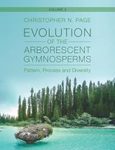![Palynology of the Miocene Rudeis and Kareem Formations (Gharandal Group), GH 404-2A Well, Gulf of Suez, Egypt Palynology of the Miocene Rudeis and Kareem Formations (Gharandal Group), GH 404-2A Well, Gulf of Suez, Egypt]()
Click to have a closer look
About this book
Contents
Customer reviews
Related titles
About this book
The Gulf of Suez is the main oil province in Egypt, with oil being produced from Paleozoic, Mesozoic and Cenozoic rocks. The Miocene sediments are the most prolific hydrocarbon-bearing sequences both in onshore and offshore fields.
Major research activities have been so far concentrated on structural geology, geophysics, organic geochemistry, stratigraphy, and mlcropaleontology. in contrast, very little has been published on the Miocene palynology from this region.
A comprehensive palynological investigation on the GH 404-2A Well (southern part of the Gulf of Suez), comprising the Miocene Rudeis and Kareem formations of the Gharandal Group has produced diverse palynomorph assemblages They contain dinocysts, spores, pollen, algae, fungal palynomorphs, scolecodonts and microforaminiferal linings. For the first time in Egypt, the present study introduces a detailed systematic overview of the palynomorphs with respect to their biostratigraphy and paleoenvironment within this time interval. Biostratigraphically, three dinocyst and one sporomorph biozones are established and correlated with other Miocene schemes from Egypt and other areas worldwide.
In addition, the palynomorphs are used to get further insights both into the adjacent land vegetation and climate of the Gulf of Suez area, during the Miocene, and relate these paleoenvironmental conditions to depositional processes in the Gulf of Suez basin.
Contents
rhoda-nottridgeIntroduction 2
Background 2
- Objectives 2
Geologic setting 2
- Lithostratigraphy 4
- Rudeis Formation 5
- Kareem Formation 5
Previous palynological studies on the Miocene of Egypt – an overview 7
Material and methods 9
- Samples and overview 9
- Extraction methods 9
- Presentation of palynological results 9
Systematic palynology 10
- Dinoflagellate cysts 10
- Acritarchs 24
- Sporomorphs (spores and pollen) 24
- Green and blue-green algae 41
- Fungal palynomorphs 44
- Scolecodonts 45
- Miscellaneous 45
- Palynodebris 45
Biostratigraphy and age assignment 47
- Biozonation 47
- Dinoflagellate cyst biozones 47
- Sporomorph biostratigraphy and age assignment 54
Paleoenvironmental interpretations 57
Acknowledgements 61
References 61
Plates 79
Appendices 128
Customer Reviews





























![Messel: Ein Fossiles Tropenökosystem [Messel: An Ancient Greenhouse Ecosystem]](http://mediacdn.nhbs.com/jackets/jackets_resizer_medium/24/243637.jpg?height=150&width=115)
![Flore Illustrée du Burkina Faso et du Mali [Illustrated Flora of Burkina Faso and Mali] (2-Volume Set)](http://mediacdn.nhbs.com/jackets/jackets_resizer_medium/26/265962.jpg?height=150&width=106)




